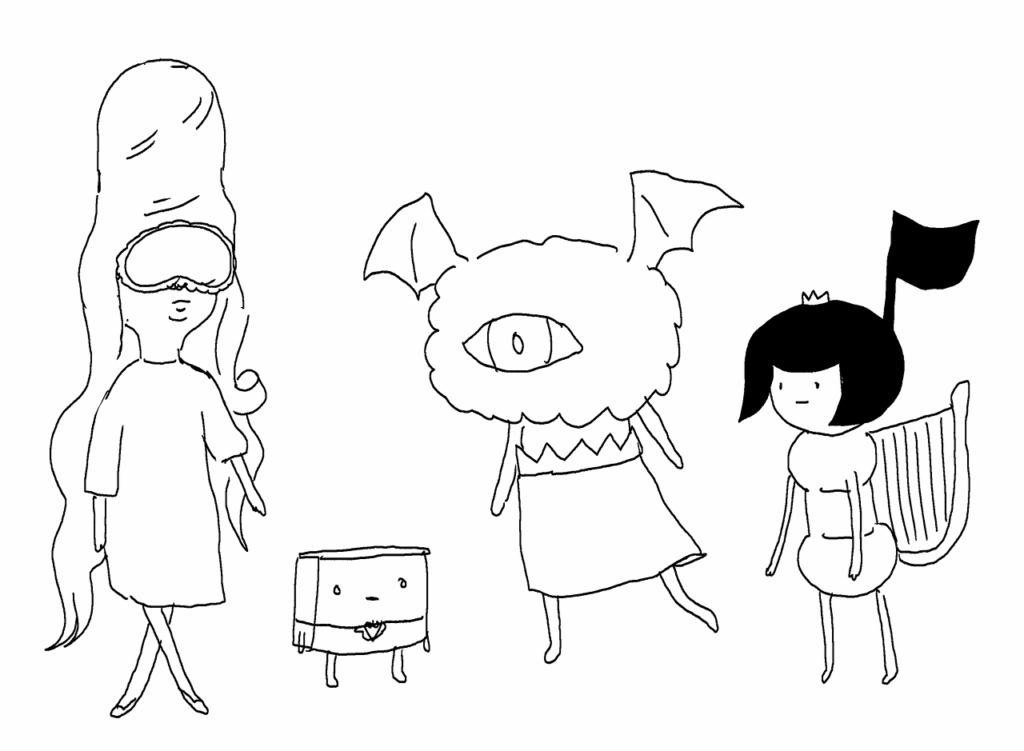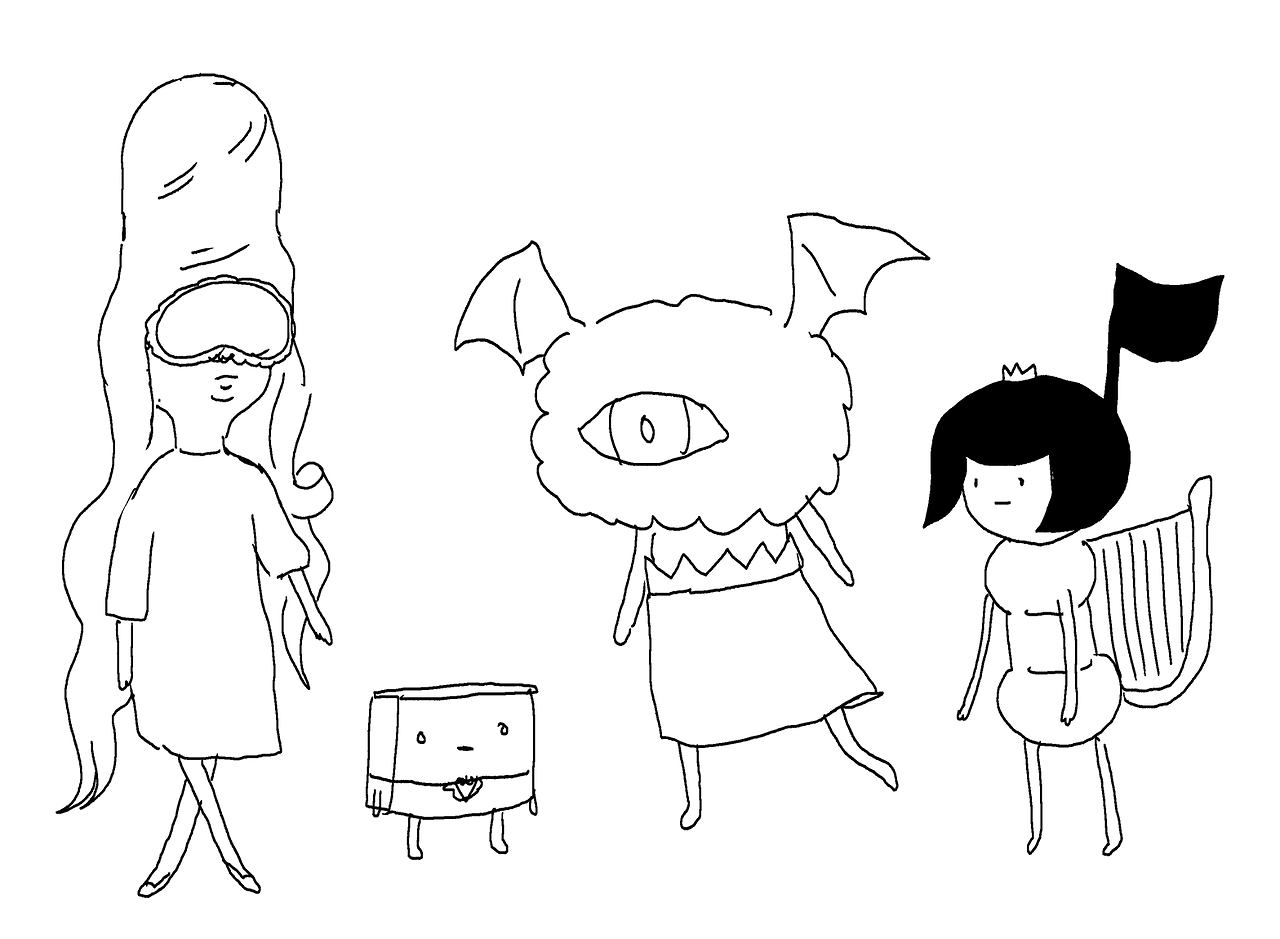
The Nightmare Princess: Unveiling the Dark Side of Fairytales
The fairytale world often paints a picture of princesses as paragons of virtue, beauty, and grace. However, beneath the shimmering surface of castles and happily-ever-afters lies a darker archetype: the nightmare princess. This figure, a stark contrast to the traditional damsel in distress, embodies rebellion, power, and sometimes, outright malevolence. Exploring the nightmare princess trope allows us to delve into the complexities of female characters and challenge the simplistic narratives that have long dominated popular culture. This article will examine the emergence of the nightmare princess in literature, film, and video games, analyzing her motivations, impact, and the societal anxieties she often reflects.
Defining the Nightmare Princess
What exactly constitutes a nightmare princess? Unlike her passive, often victimized counterpart, the nightmare princess takes control of her own destiny, even if that destiny leads down a morally ambiguous or even villainous path. She might be cursed, driven by revenge, or simply disillusioned with the constraints placed upon her by her royal lineage. Key characteristics often include:
- Agency: She is proactive and makes her own choices, regardless of the consequences.
- Power: She wields power, whether magical, political, or physical, and isn’t afraid to use it.
- Moral Ambiguity: Her actions are often ethically questionable, blurring the lines between good and evil.
- Rebellion: She rejects the traditional expectations of a princess, challenging societal norms and defying authority.
Literary Origins and Evolution
The seeds of the nightmare princess can be found in classic fairy tales, though often in a nascent form. Characters like the stepmothers in Snow White and Cinderella display villainous tendencies, motivated by jealousy and a desire for power. However, these characters are typically relegated to the role of antagonist, serving as obstacles for the ‘true’ princess to overcome. The modern nightmare princess, in contrast, is often the protagonist of her own story, allowing for a deeper exploration of her motivations and complexities.
One early example can be found in the character of Morgan le Fay from Arthurian legends. While interpretations vary, she is often depicted as a powerful sorceress who uses her magic for both good and evil, driven by her own agenda and challenging the patriarchal structures of Camelot. [See also: The Enduring Appeal of Arthurian Legends] Her ambiguous morality and rejection of traditional female roles make her a proto-nightmare princess.
The Nightmare Princess in Film and Television
Film and television have embraced the nightmare princess archetype, offering a diverse range of interpretations. Disney, known for its traditional princess narratives, has even begun to explore darker themes and more complex female characters. Maleficent, initially portrayed as a purely evil villain, was reimagined in the 2014 film as a misunderstood fairy driven to vengeance by betrayal. This shift in perspective allows the audience to empathize with her actions, even as she wreaks havoc on the kingdom.
Other examples include characters like Regina Mills (the Evil Queen) in the television series *Once Upon a Time*. While initially presented as a villain, the series delves into her backstory, revealing the trauma and heartbreak that led her down a path of darkness. These portrayals challenge the simplistic notion of princesses as inherently good, exploring the complexities of human nature and the potential for darkness within even the most seemingly innocent individuals. The nightmare princess in film offers a visually compelling and often emotionally resonant exploration of female power and agency.
The Nightmare Princess in Video Games
Video games provide a unique platform for exploring the nightmare princess archetype, allowing players to directly embody and control these characters. Princess Peach, often portrayed as a damsel in distress in the *Super Mario* franchise, has occasionally been given a darker edge in spin-off titles. More notably, games like *American McGee’s Alice* and its sequel *Alice: Madness Returns* present a twisted and gothic reimagining of Alice in Wonderland, transforming her into a mentally disturbed and vengeful warrior. [See also: The Impact of Gothic Literature on Video Game Design] This version of Alice is far from the innocent girl of the original story; she is a nightmare princess battling her inner demons and external enemies with brutal force.
Other examples include characters like Kerrigan from the *StarCraft* series, who undergoes a transformation into the Queen of Blades, a powerful and ruthless leader of the Zerg swarm. While not technically a princess, her former royal status and subsequent descent into darkness align with the nightmare princess archetype. Video games offer a particularly interactive and immersive experience of the nightmare princess, allowing players to explore the complexities of her character and the consequences of her actions.
Societal Anxieties and the Nightmare Princess
The rise of the nightmare princess reflects a shift in societal attitudes towards female characters and their roles in storytelling. The traditional princess narrative, with its emphasis on passivity and reliance on male saviors, has become increasingly outdated and unsatisfying for modern audiences. The nightmare princess, in contrast, embodies female empowerment and challenges patriarchal structures, offering a more complex and nuanced representation of women.
However, the nightmare princess also reflects societal anxieties about female power and agency. Her morally ambiguous actions and rejection of traditional norms can be seen as threatening to established power structures. The portrayal of female characters as powerful and independent, but also potentially dangerous or destructive, raises questions about the nature of power and its potential for abuse. The nightmare princess, therefore, serves as a complex and multifaceted figure, reflecting both the aspirations and anxieties of contemporary society.
The nightmare princess can also be seen as a reflection of the increasing complexity of the world we live in. In a world where simple solutions are rare and moral dilemmas are common, the traditional black-and-white morality of fairy tales no longer resonates with audiences. The nightmare princess, with her morally ambiguous actions and complex motivations, reflects the gray areas of modern life and the challenges of navigating a world where good and evil are often intertwined. The nightmare princess is not simply a villain; she is a reflection of our own internal struggles and the complexities of the world around us.
Examples of Nightmare Princesses in Popular Culture
To further illustrate the concept, let’s examine some specific examples of nightmare princesses in popular culture:
- Daenerys Targaryen (Game of Thrones): While initially presented as a benevolent ruler, Daenerys’s descent into madness and her willingness to use fire and blood to achieve her goals solidified her status as a nightmare princess. Her story highlights the corrupting influence of power and the dangers of unchecked ambition.
- Ursula (The Little Mermaid): While technically a sea witch, Ursula’s royal lineage (as Triton’s sister) and her desire for power make her a compelling example. Her manipulative tactics and willingness to exploit others for her own gain solidify her place as a nightmare princess figure.
- Ravenna (Snow White and the Huntsman): Queen Ravenna’s obsession with beauty and her ruthless pursuit of immortality make her a classic nightmare princess. Her vanity and cruelty are a stark contrast to the innocent Snow White, highlighting the dangers of unchecked ego and the lengths to which some will go to maintain their power.
The Future of the Nightmare Princess
The nightmare princess archetype is likely to continue to evolve and diversify in the years to come. As societal attitudes towards gender roles and power dynamics continue to shift, we can expect to see even more complex and nuanced portrayals of female characters who challenge traditional norms and defy expectations. The nightmare princess offers a powerful and compelling alternative to the traditional damsel in distress, providing a platform for exploring the complexities of female agency, power, and morality. Her continued presence in literature, film, and video games ensures that these important conversations will continue to be had. The nightmare princess is here to stay, and her influence on storytelling will only continue to grow. The nightmare princess represents a powerful shift in how we perceive female characters and their roles in shaping narratives. The nightmare princess challenges us to question our own assumptions about good and evil, and to embrace the complexities of human nature. The nightmare princess is a force to be reckoned with, and her story is far from over.
Conclusion
The nightmare princess represents a significant departure from the traditional fairytale archetype, offering a more complex and nuanced portrayal of female characters. By embracing agency, power, and moral ambiguity, the nightmare princess challenges societal norms and reflects the evolving attitudes towards gender roles and power dynamics. Whether in literature, film, or video games, the nightmare princess continues to captivate and challenge audiences, ensuring her enduring presence in popular culture for years to come. She allows for a deeper exploration of female characters and challenges the simplistic narratives that have long dominated popular culture. The nightmare princess is a testament to the power of storytelling to reflect and shape our understanding of the world around us.

